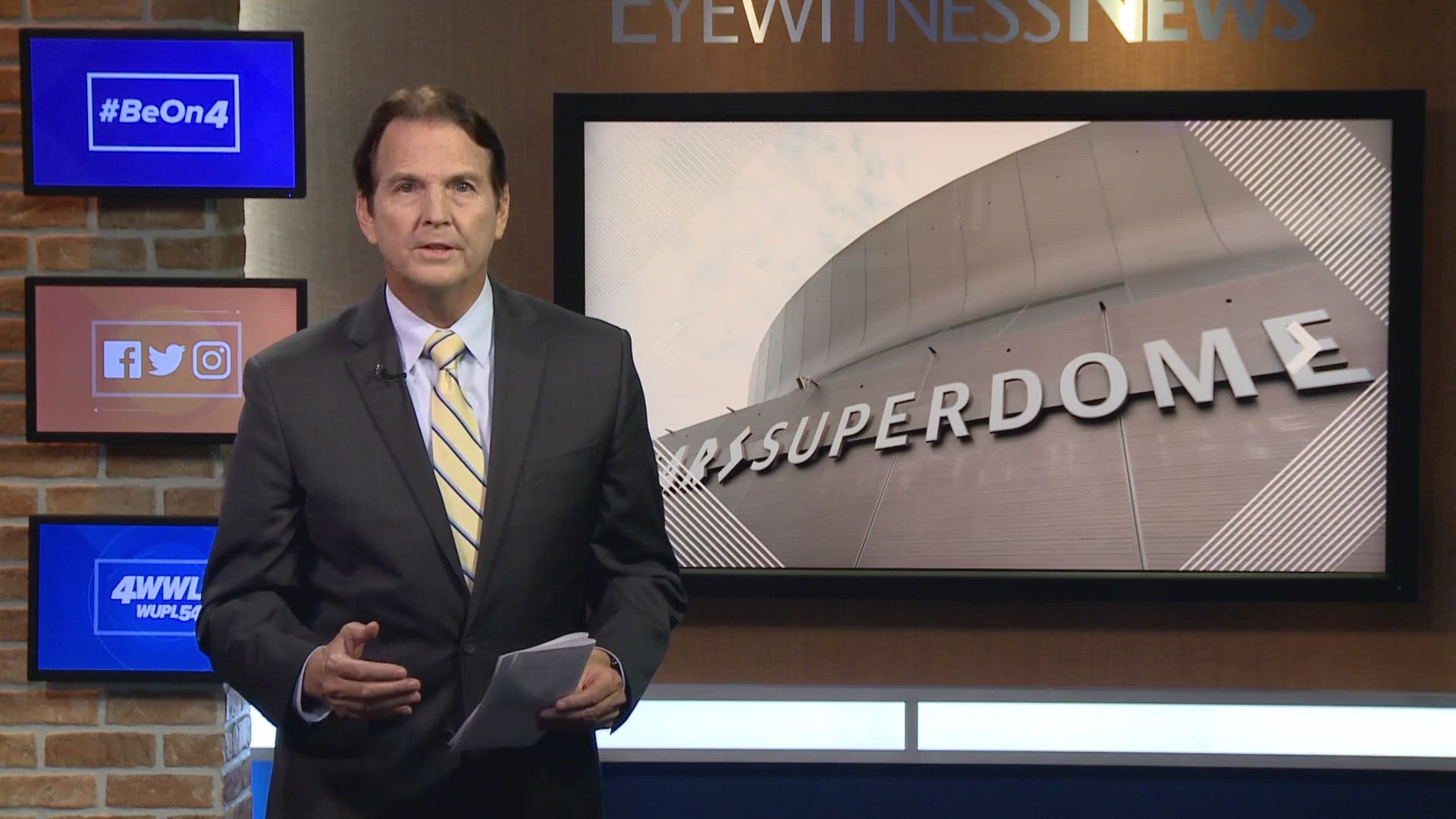In the NFL, it’s all about keeping up with the Joneses.
This upcoming season, Saints fans will be greeted with the most significant, transformative changes in the history of the Caesars Superdome.
The dome is going open-concept.
The concourses are now twice as wide. And gone is the old system of interior pedestrian ramps.
Those ramps were been replaced by three, 150-feet-high atria with crisscrossing escalators that take visitors from the lower bowl to the plaza level.
“The minute they walk in the door they’ll see changes,” said Doug Thornton, VP for ASM Global, the company that manages the Superdome for the state. “This year has probably been the heaviest in terms of the construction schedule and probably the most challenging.”
This is the third of four phases in the half-billion-dollar renovation.
Thornton also says there will also be more restrooms and improved food and beverage service.
“This is the most dramatic renovation that has ever taken place in this building, I will tell you. We’ve been through three of these now since Katrina.”
Workers are now putting the finishing touches on a massive club lounge from goal line to goal line.
The 300 level suites have also been expanded.
ASM spokesman Mike Hoss showed us why getting an adult beverage should be no problem this season.
“That’s what we call the 40-yard bar. It goes roughly from the 30 to the 30. You’ve got this new space where you can traverse the concourse here,” Hoss said.
The Superdome is up against a hard deadline to complete all of the work by August 2024. The NFL would like the Saints to be able to play a full season in the renovated building in advance of Super Bowl 59, which will be played in New Orleans on Feb. 9, 2025.
“When this is complete, we believe we’ll have a modern building that will continue to serve us for another 15 to 20 years without major renovations,” Thornton said.
This year, many of the improvements were made to the east side of the stadium.
Next off-season, workers will complete renovations to the west side.
The Saints and the state board that runs the dome share the bulk of the half-billion-dollar price tag.
The state contributed about $54 million to the project.

